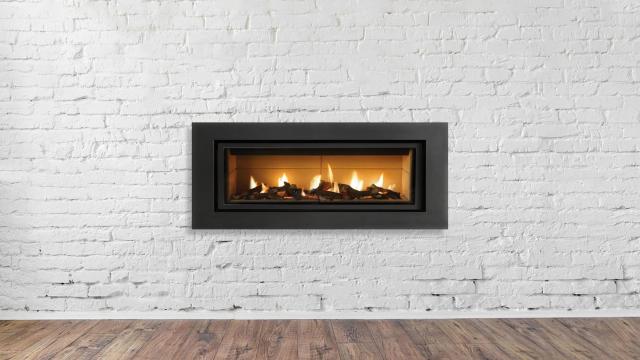There’s something special about a real, wood-burning fireplace: The scent, the crackling sounds, and watching the logs slowly burn down to glowing embers. But they’re also a hassle, and pretty dirty. Because of that, many people have opted to install gas fireplaces instead.
And while they are certainly cleaner — eliminating the ashes and heavy soot that comes with burning wood — gas fireplaces aren’t completely hands-off. In fact, they need some regular maintenance to keep them working as safely and efficiently as possible. Here’s what to know about how to clean a gas fireplace, and why it’s necessary.
Why you need to clean your gas fireplace
Unlike their wood-burning counterparts, gas fireplaces don’t produce creosote. But whether they run on propane or natural gas, they can leave buildup behind that should be cleaned, according to experts at Fiddler on the Roof Chimney Service.
It’s a good idea to have your fireplace inspected once a year by a licensed gas service provider. According to an article by Jessica Bennett for Better Homes and Gardens, the technician doesn’t only inspect: they can also thoroughly clean your gas fireplace, check for leaks, ensure the fireplace is venting properly, and identify any potential safety issues.
But if you use a gas fireplace on a regular basis, you’re going to want to clean it more than once a year. Like any other spot in a house, the fireplace can get dusty and dirty over time — and if it has glass doors, those can end up turning cloudy and in need of a wipe.
How to clean a gas fireplace
Like any home repair, keep safety top-of-mind when working with gas. And while we’re on the subject, if you have a gas fireplace in your home, make sure you also have a working carbon monoxide detector nearby so you know if you ever end up getting a gas leak.
Before getting started, dig out or look up your fireplace’s user’s manual, take note of any safety precautions, and follow the cleaning instructions they provide, Bennett advises. Next, turn off the pilot light and the gas valve, and be sure to let the fireplace cool down completely.
Take it apart
Then, follow the manufacturer’s instructions for removing the glass panels so that you have access to the inside of the fireplace. Put down an old sheet or towel or a dropcloth, and place the glass panels there while you clean, Bennet advises. If it’s possible to take out the fake logs, do that too, and put them on the same cloth.
Clean the inside
Now it’s time to clean the inside of the fireplace. If yours is the kind with those little decorative stones, take those out too. Then use a vacuum to suck up any dust or dirt that has accumulated inside, Bennett suggests. Grab a soft rag or cloth, dust off the fake logs, and wipe down anything else that could use it. Then put the fake logs and decorative stones back in the fireplace.
Clean the glass
If the glass panels are more of a foggy white than crystal clear, Bennett says that it’s likely from the chemical residue that comes with using a gas fireplace. She also advises using a special glass cleaner designed for fireplace panels. Buff out the cleaner with a soft rag, then replace the glass.
Don’t forget you can save on your next buy with one of our eBay discount codes.

Leave a Reply
You must be logged in to post a comment.